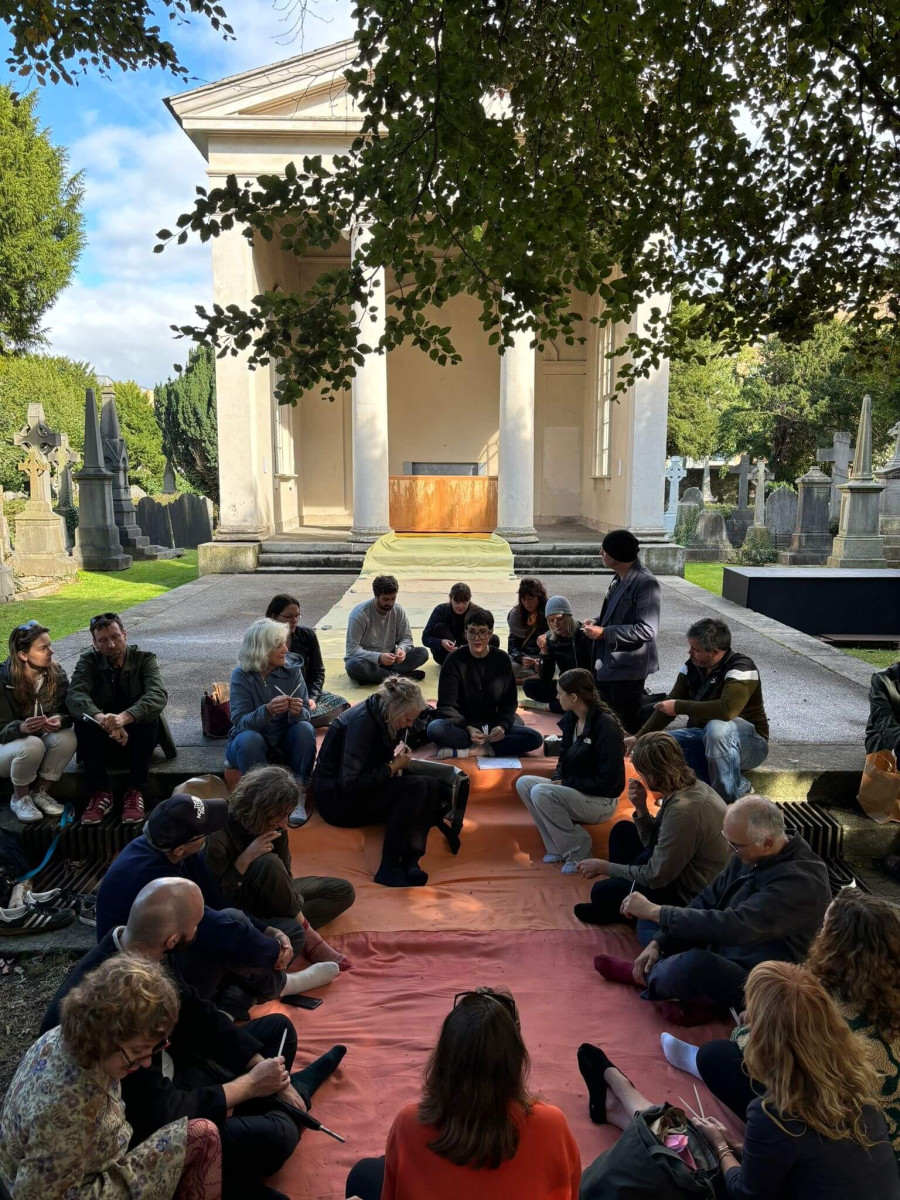We that swarm among the living and the dead (2024-2027)

Prof. Mick Wilson
Ongoing
The importance of making a distinction between the conditions of the living and those of the dead is a familiar theme distributed across many communities and societies. While the distinction between the living and the dead most often enacts key modes of contrast and separation, it does not always require a totalising segregation, neither spatially nor symbolically. For some the dead may be understood as integral to the community and dwelling spaces of the living, as is well attested for example by traditions of intramural burial where the bodies of ancestors are incorporated into the very fabric of the dwelling place of the living. Within colonial-modernity distinctions between the living and the dead have tended toward a fundamental dichotomy. We may consider the line dividing the living and the dead to be coeval with the cleavage between Fanon’s zones of being and non-being. Whether in terms of the contested constructs of the human or the more-than-human, the colonial-modern division between the living and the dead, and imaginaries of their non-relation, appear to be of great consequence. The logic of genocide has often been predicated upon the construal of the dead as non-beings assigned to a political non-existence with no claim upon the earth and with no claim that can be made against the living. However, we have also seen how the dead, the victims of genocide may be invoked as the agents of legitimation for all manner of political projects, including further genocide and atrocity.
In the first phase (2025) of the project the goal is to describe, theorize and problematize this radical exclusion of the dead from political community with the living within colonial-modernity. An important aspect of this phase of work will be to give consideration to moments of apparent exception where the dead appear to be accorded a capacity for co-belonging with the living as with the invocation of the glorious or heroic dead in nation-state imaginaries or the politically significant memorialisation of the dead. As part of this initial stage of the inquiry, two online reading groups are convened on the last Monday and the last Wednesday of each month respectively. Each reading group functions as a process of collective inquiry. These enable the deepening of the research process by drawing upon the expertise and insight of researchers from across a range of disciplines, traditions and international institutional contexts; and the testing of the inquiry’s preliminary terms within a wider community of researchers, artists and curators. The goal is to critically consider the grounds for, and significance of, a claim for the exceptionalism of colonial-modernity with regard to the purportedly radical exclusion of the dead. In the second phase (2026) of the inquiry consideration is given to competing constructions of life-death and different political ontologies of the living and the dead. This phase of the inquiry seeks to identify the fault lines in political figures and concepts of life-death, of natality and mortality, of bio- and necro-politics, with particular attention to divergences between broadly androcentric and posthumanist approaches to these themes. In the third phase of the inquiry consideration will be given to the ways of imagining beyond the colonial-modern dichotomy of the living and the dead and whether such imaginaries may already be in development across a range of artistic practices, climate crisis discourses and a range of policy discourses. Throughout the focus is on the agency and affordances of different imaginaries of life-death.
If you would like to know more about the research process or if you wish to join one of the reading groups, please contact the project lead Prof. Mick Wilson.
mick.wilson@gu.se